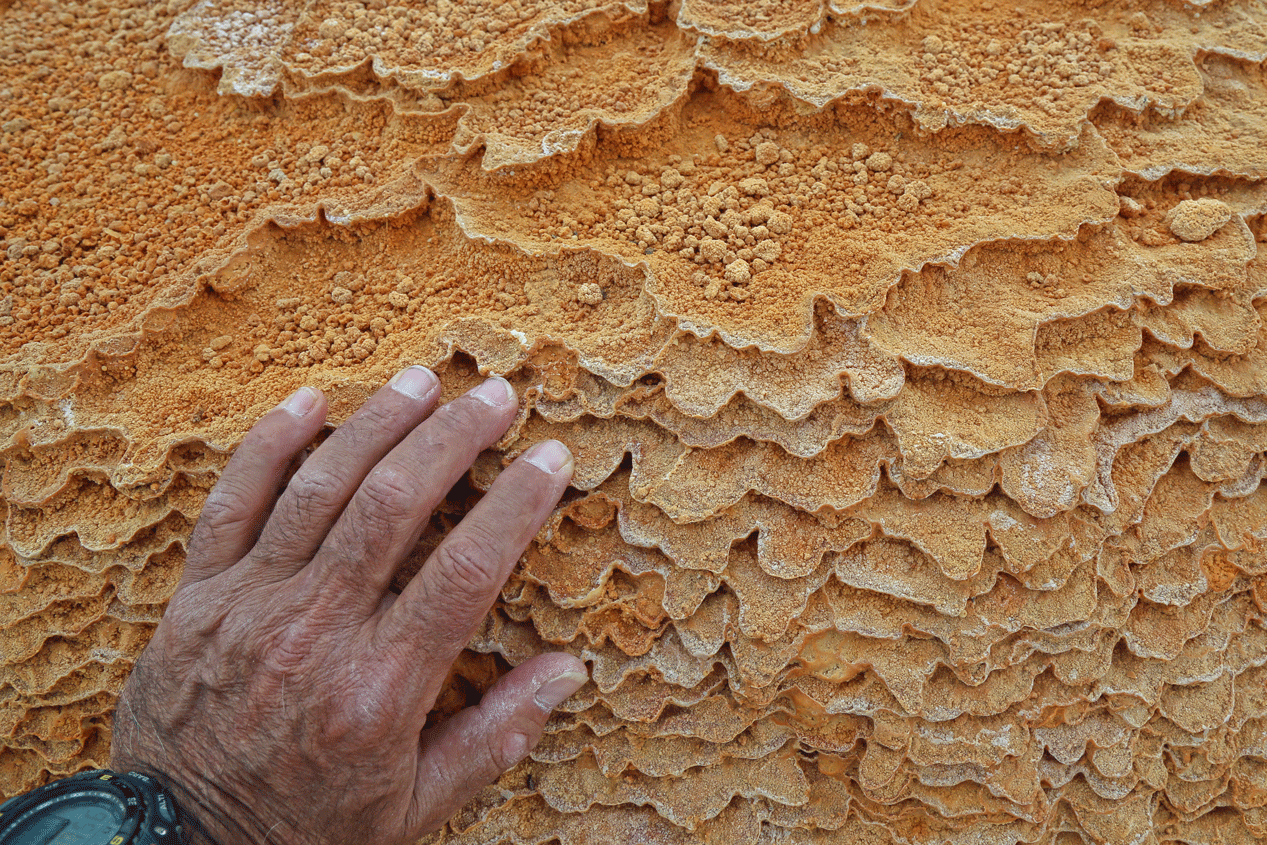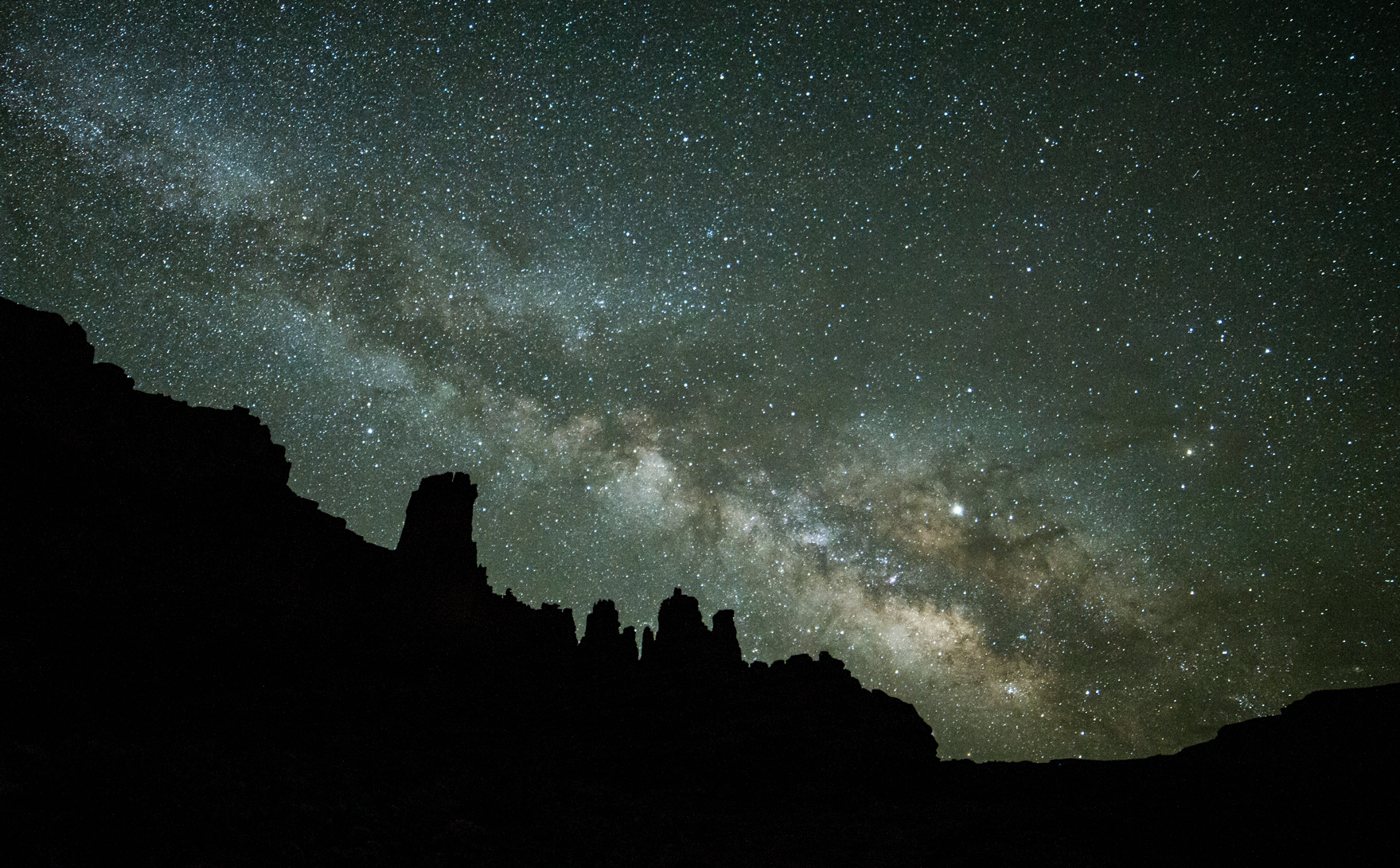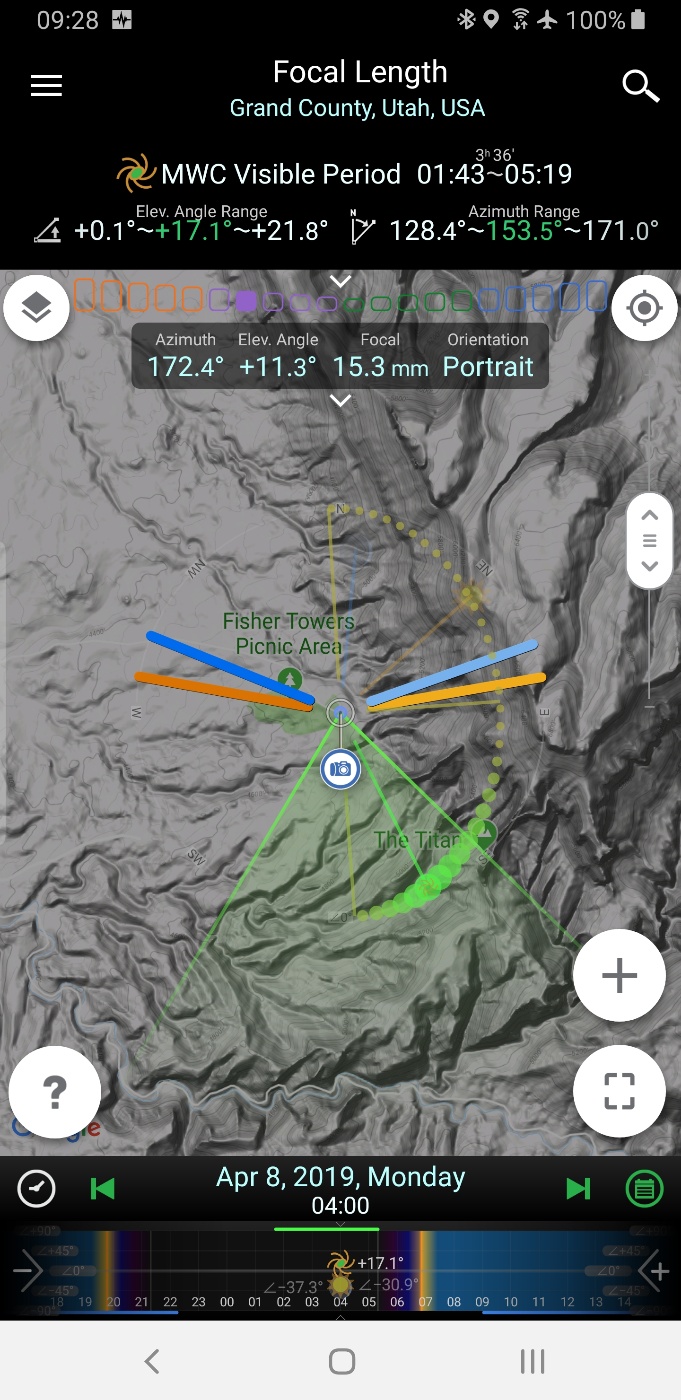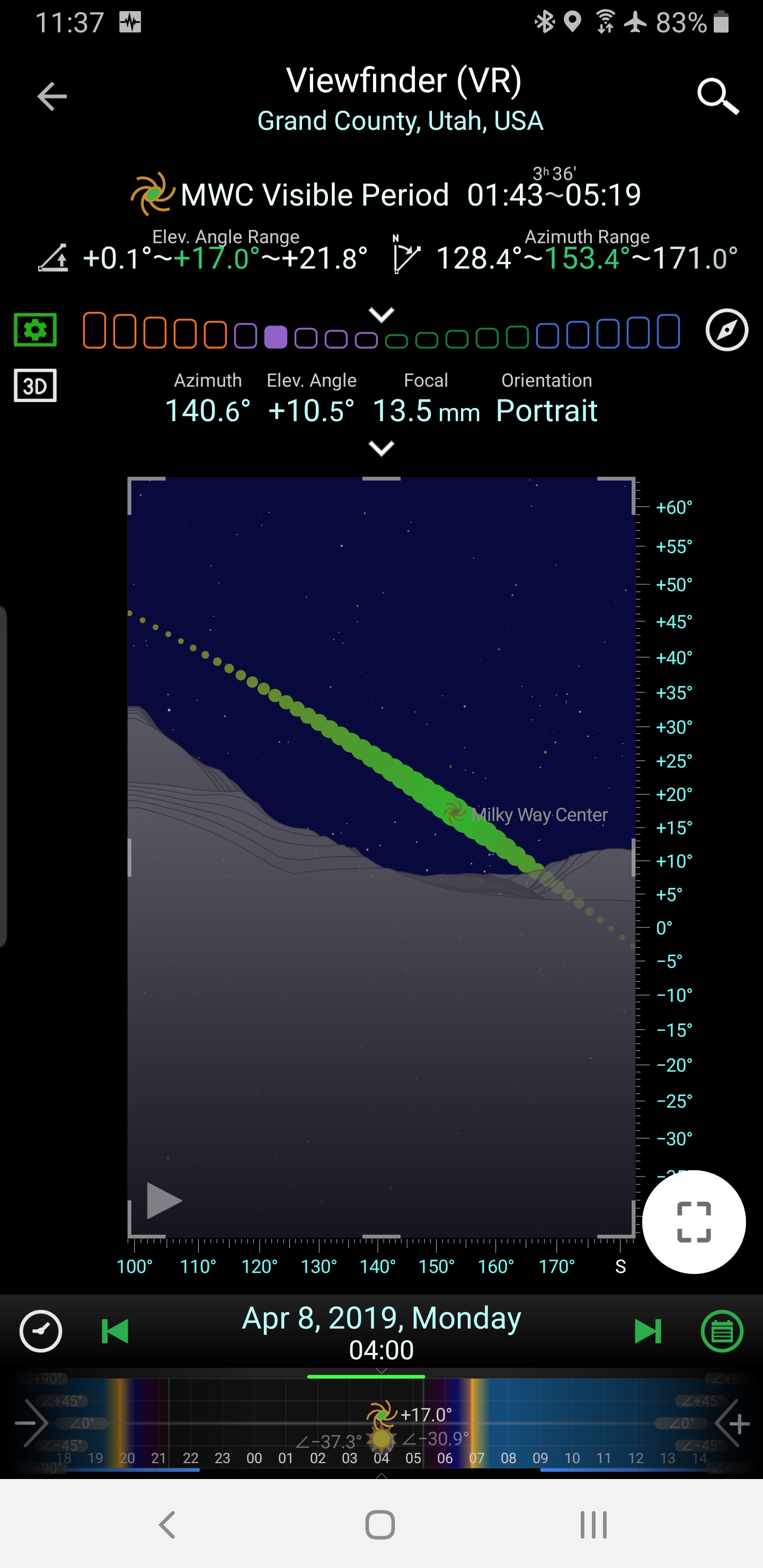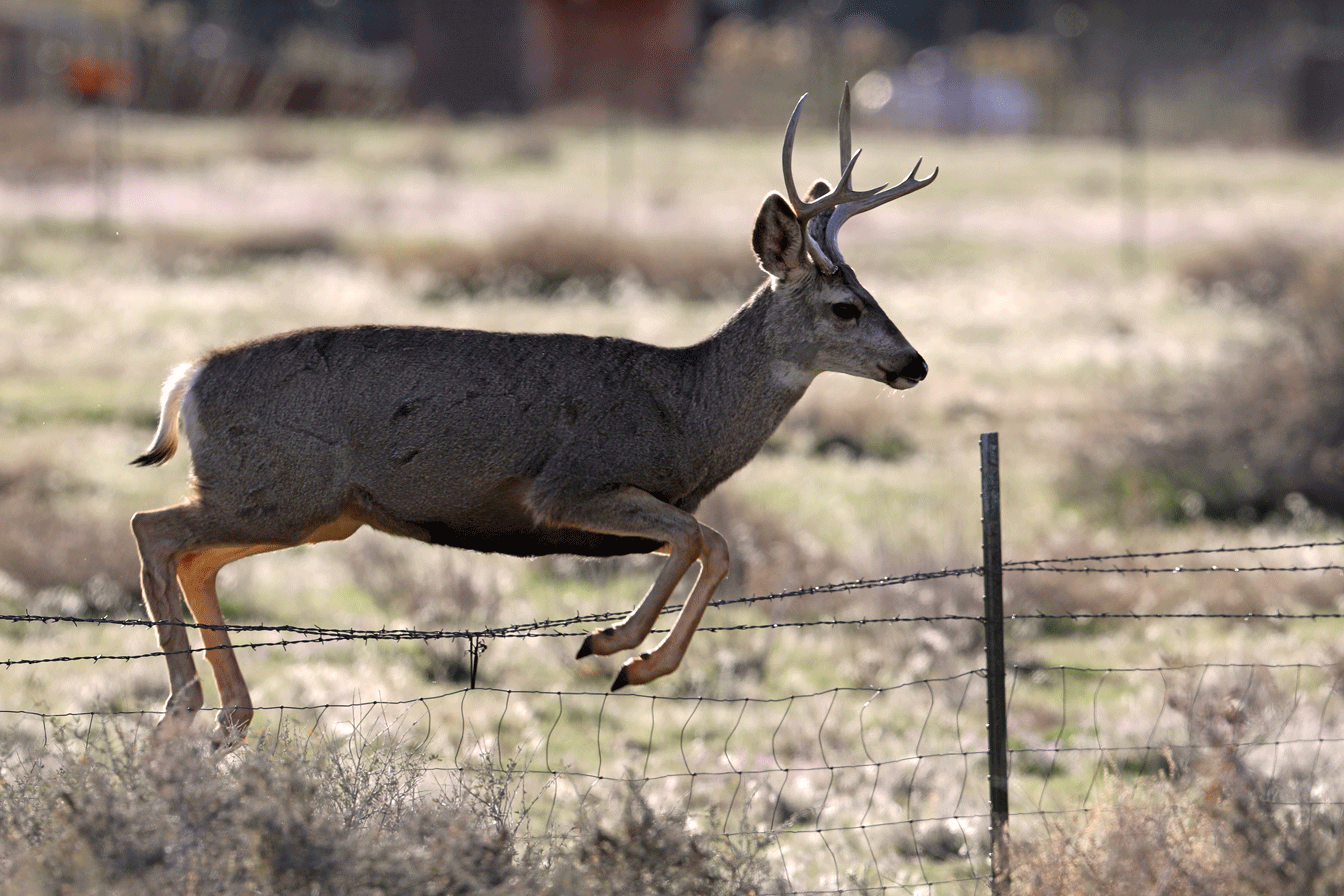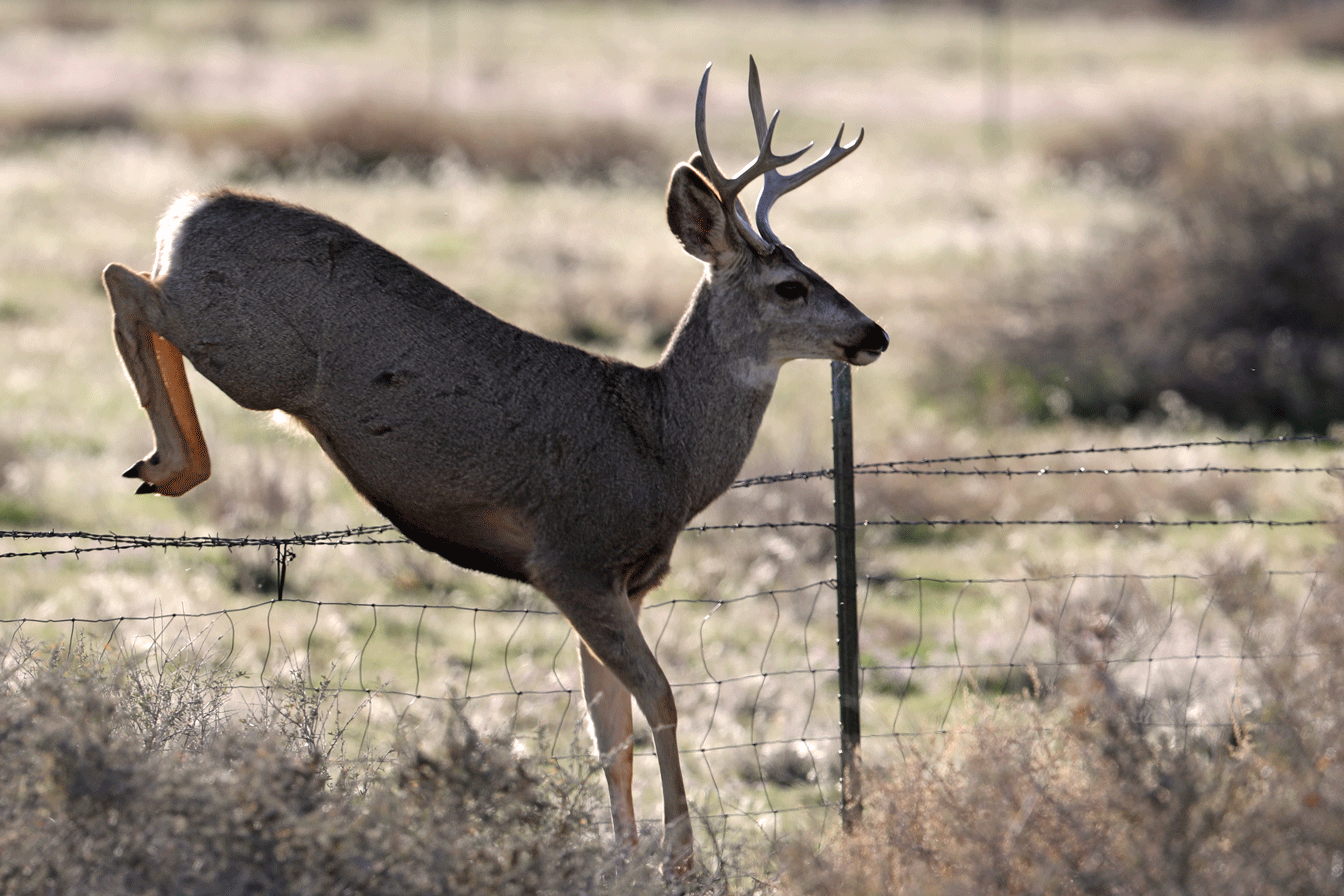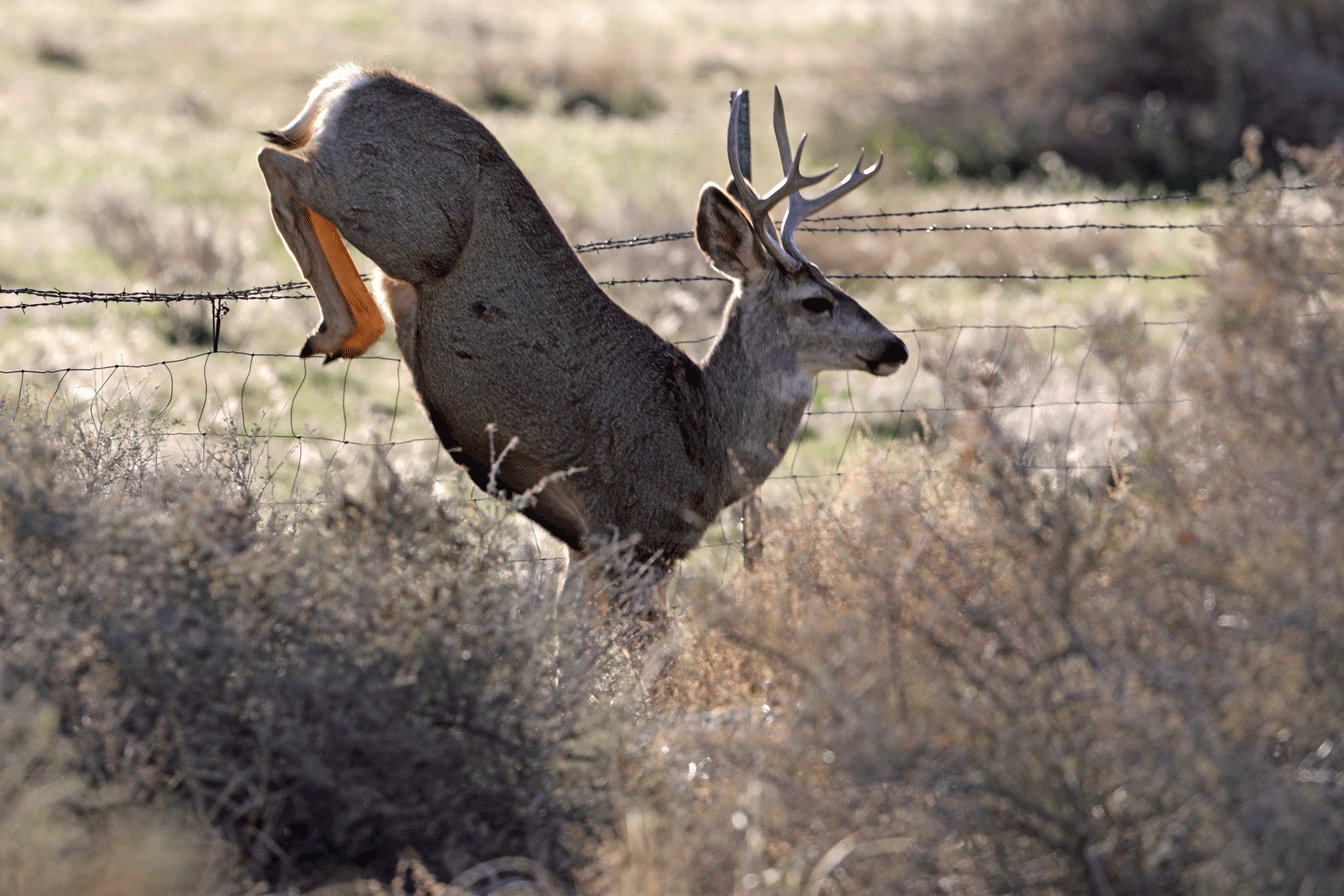is an unusual and rare CO2-driven cold water geyser that is depositing a colorful mound of travertine. Furthermore, it’s the result of an improperly abandoned oil/gas exploration well immediately south of Green River, Utah, and it periodically erupts on 8 and 22 hour-long cycles that are poorly understood.
An older, innactive but natural travertine and barite mound, originally described by John Wesley Powell on his explorations in 1869: “We stop to examine some interesting rocks, deposited by mineral springs that at one time must have existed here, but which are no longer flowing... “
Mini-rimstone dams on the steeper portions of the travertine mound.
The most active portion of the travertine mound.
Here’s an interesting technical reference about this unusual feature: GEOSIGHTS: CRYSTAL GEYSER, GRAND COUNTY, UTAH.


